Choosing the right flood light can make a significant difference in illuminating outdoor spaces effectively. At PacLights, we often get asked about the differences between LED and halogen flood lights.
This comparison will help you understand the pros and cons of each option, allowing you to make an informed decision for your lighting needs.
Understanding LED Flood Lights
What Are LED Flood Lights?
LED flood lights are powerful, energy-efficient lighting solutions that have transformed outdoor illumination. These fixtures use Light Emitting Diodes (LEDs) to produce bright, focused light that covers large areas effectively.
How LED Flood Lights Work
LED flood lights operate on a simple principle. An electric current passes through a semiconductor material, which emits light. This process (known as electroluminescence) converts most of the energy into light rather than heat, making it highly efficient.
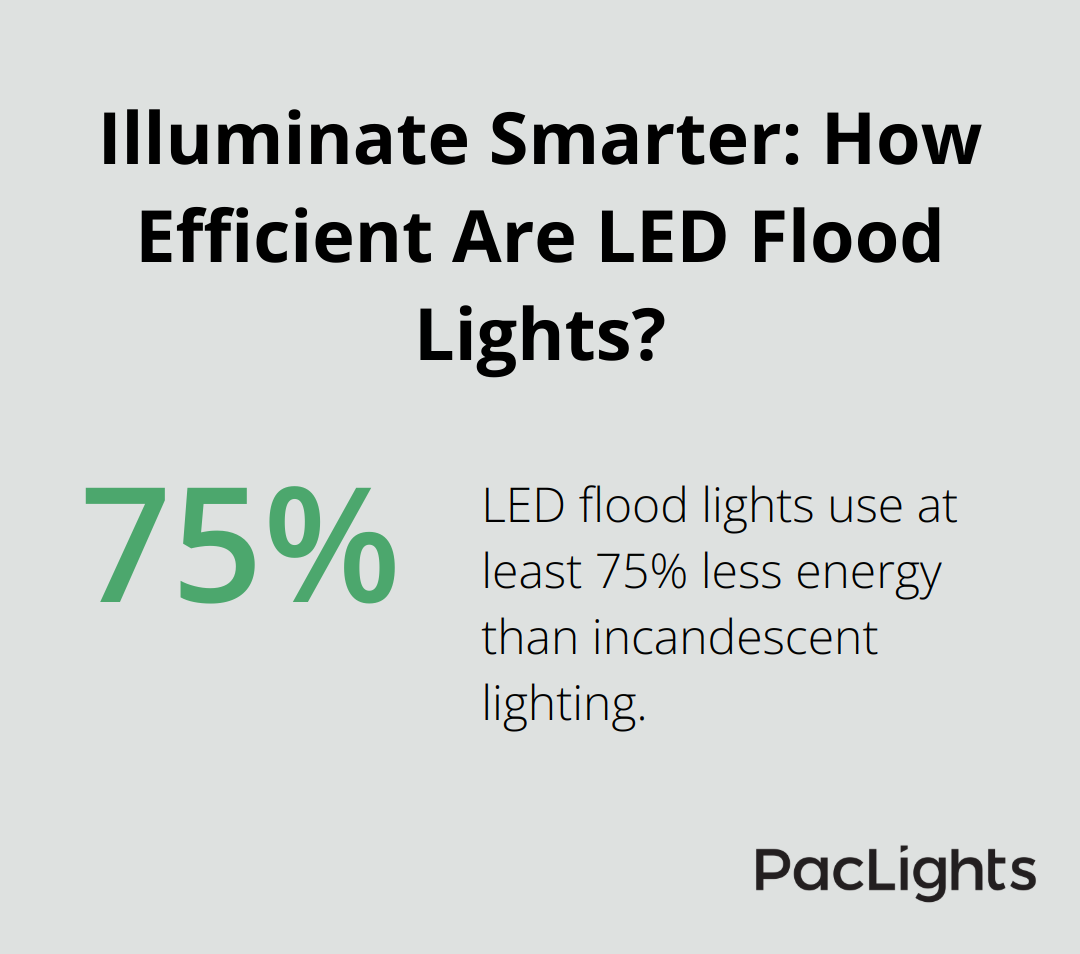
Specialized optics direct and amplify the light from individual LEDs. This allows LED flood lights to project intense, uniform illumination over expansive areas, making them ideal for outdoor spaces, sports fields, and industrial facilities.
Key Features of LED Flood Lights
Energy efficiency stands out as a primary feature of LED flood lights. LED flood lights use at least 75% less energy, and last up to 25 times longer, than incandescent lighting. This translates to significant cost savings over time, especially for large-scale lighting projects.
Longevity is another major advantage. LED flood lights can last up to 50,000 hours or more, far surpassing traditional lighting options. This extended lifespan reduces replacement frequency and maintenance costs, making them a smart long-term investment.
LED flood lights also offer superior light quality. They provide instant, flicker-free illumination and can emit light in a wide range of color temperatures. This flexibility allows for better color rendering and visibility, which is essential for security applications and nighttime activities.
Practical Benefits for Users
Property owners and facility managers will find LED flood lights offer benefits beyond energy savings. Their durability and resistance to shock and vibration make them ideal for harsh outdoor environments. Many models are also weather-resistant, ensuring reliable performance in various climatic conditions.
LED flood lights offer high versatility in terms of control options. They integrate easily with motion sensors, timers, and smart home systems, allowing for automated operation and further energy savings. Some advanced models even offer color-changing capabilities, useful for creating ambiance or for special events.
When selecting LED flood lights, it’s important to focus on the lumens output rather than wattage. Lumens measure the actual light output, giving a more accurate indication of brightness. For example, a 100-watt equivalent LED flood light might produce around 1500 lumens, providing ample illumination for most residential applications.
As we move on to explore halogen flood lights, it’s important to keep these features of LED flood lights in mind for a comprehensive comparison.
Halogen Flood Lights Explained
What Are Halogen Flood Lights?
Flood lighting has its origins in ancient civilizations of Mesopotamia, Egypt, and Greece. These fixtures use a tungsten filament enclosed in a quartz envelope filled with halogen gas to produce bright, intense light.
The Halogen Cycle: How These Lights Function
The halogen cycle powers these lights. Electricity passes through the tungsten filament, heating it to emit light. The halogen gas inside the bulb captures evaporated tungsten particles and redeposits them back onto the filament. This process extends the bulb’s life and maintains its brightness over time.
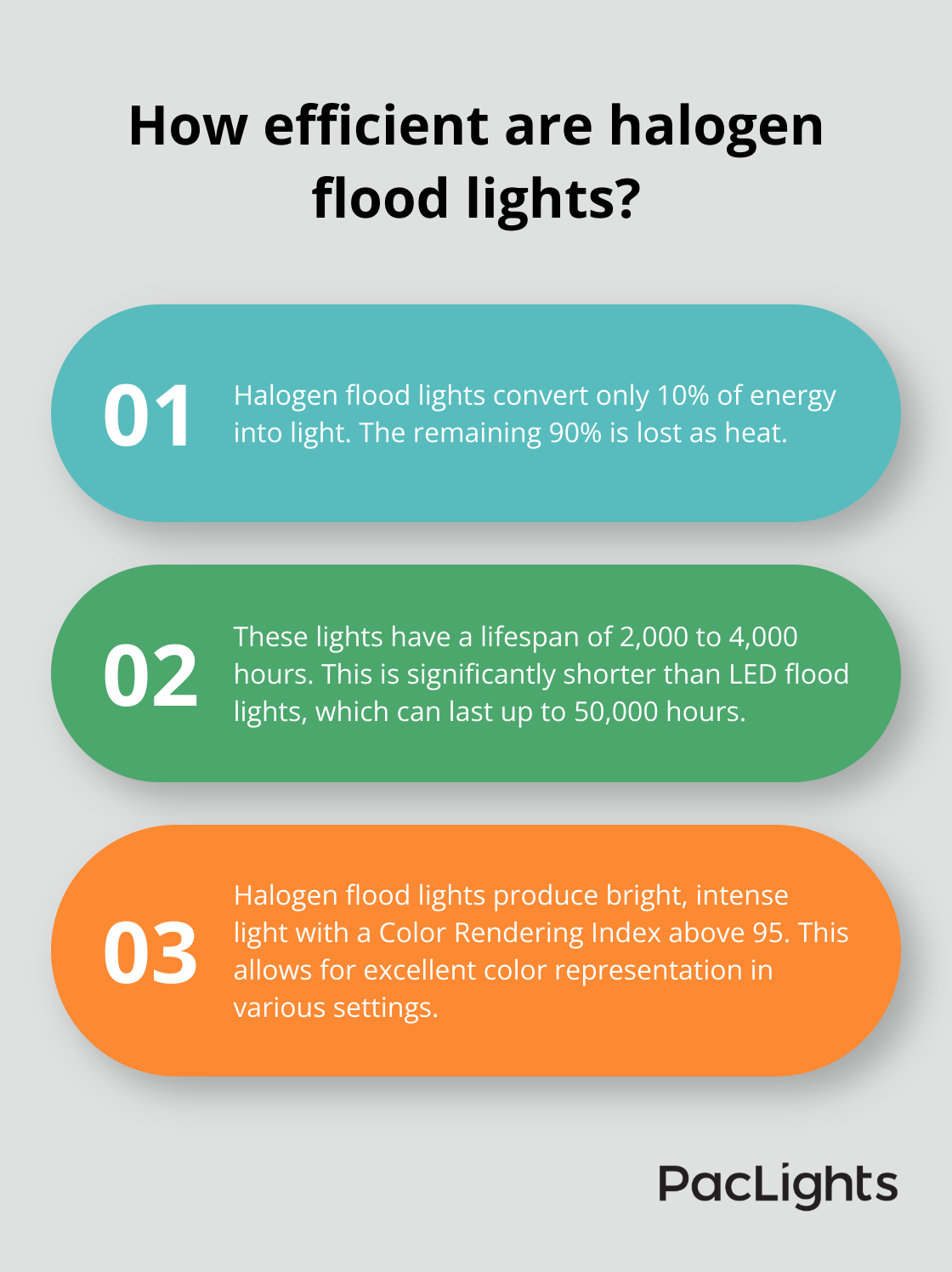
Halogen flood lights operate at higher temperatures than traditional incandescent bulbs, which allows them to produce a whiter, more intense light. This characteristic makes them effective for outdoor security lighting and large area illumination.
Advantages of Halogen Flood Lights
High light output stands out as a primary benefit of halogen flood lights. They produce a bright, focused beam that illuminates large areas effectively. This makes them suitable for applications like sports field lighting or construction site illumination.
Halogen flood lights also offer excellent color rendering. With a Color Rendering Index (CRI) often above 95, they provide truer color representation than many other lighting technologies. This can be important in settings where accurate color perception matters (such as retail displays or art galleries).
Another advantage is their instant-on capability. Unlike some other types of lights that require warm-up time, halogen flood lights reach full brightness immediately when switched on. This feature proves valuable in security applications where immediate illumination is necessary.
Drawbacks to Consider
Despite their benefits, halogen flood lights have several drawbacks that have led to their declining popularity in recent years:
- Energy Efficiency: Halogen bulbs convert only about 10% of their energy input into light, with the rest lost as heat. This inefficiency leads to higher energy costs compared to more modern lighting technologies like LEDs.
- Short Lifespan: On average, these bulbs last between 2,000 to 4,000 hours. In comparison, LED flood lights can last up to 50,000 hours or more. This shorter lifespan means more frequent replacements, increasing maintenance costs and environmental impact.
- Heat Generation: The high operating temperatures can pose safety risks, especially in enclosed spaces or near flammable materials. This heat also contributes to higher cooling costs in indoor applications.
- Fragility: Halogen flood lights are more fragile than some alternatives. The quartz envelope and filament can be easily damaged by shock or vibration, making them less suitable for areas prone to strong winds or physical impacts.
As we move forward to compare LED and halogen flood lights, it’s important to consider these characteristics and how they might impact your lighting needs.
LED vs Halogen Flood Lights: The Ultimate Showdown
Energy Efficiency and Cost
LED flood lights outperform halogen lights in energy efficiency. LED bulbs use 7-20 watts per hour, while equivalent halogen bulbs consume 35 to 500 watts per hour to emit the same amount of light. This efficiency translates to substantial cost savings. For instance, replacing a 500W halogen flood light with a 150W LED equivalent can reduce your annual energy costs by up to $100 (based on average U.S. electricity rates and 8 hours of daily use).
Lifespan and Long-Term Value
LED flood lights boast an unmatched longevity. With an average lifespan of 50,000 hours or more, LEDs outlast halogen bulbs by 10 to 25 times. This extended life results in fewer replacements and lower maintenance costs. A typical halogen flood light might require replacement every year or two, while an LED fixture could illuminate your space for a decade or more under similar conditions.
Light Quality and Performance
Both LED and halogen flood lights provide high-quality illumination, but with distinct characteristics. Halogen lights excel in color rendering, often achieving a Color Rendering Index (CRI) above 95. However, LED technology has made significant advancements in this area. Many modern LED flood lights now offer CRI ratings of 90 or higher, delivering crisp, true-to-life colors while consuming far less energy.
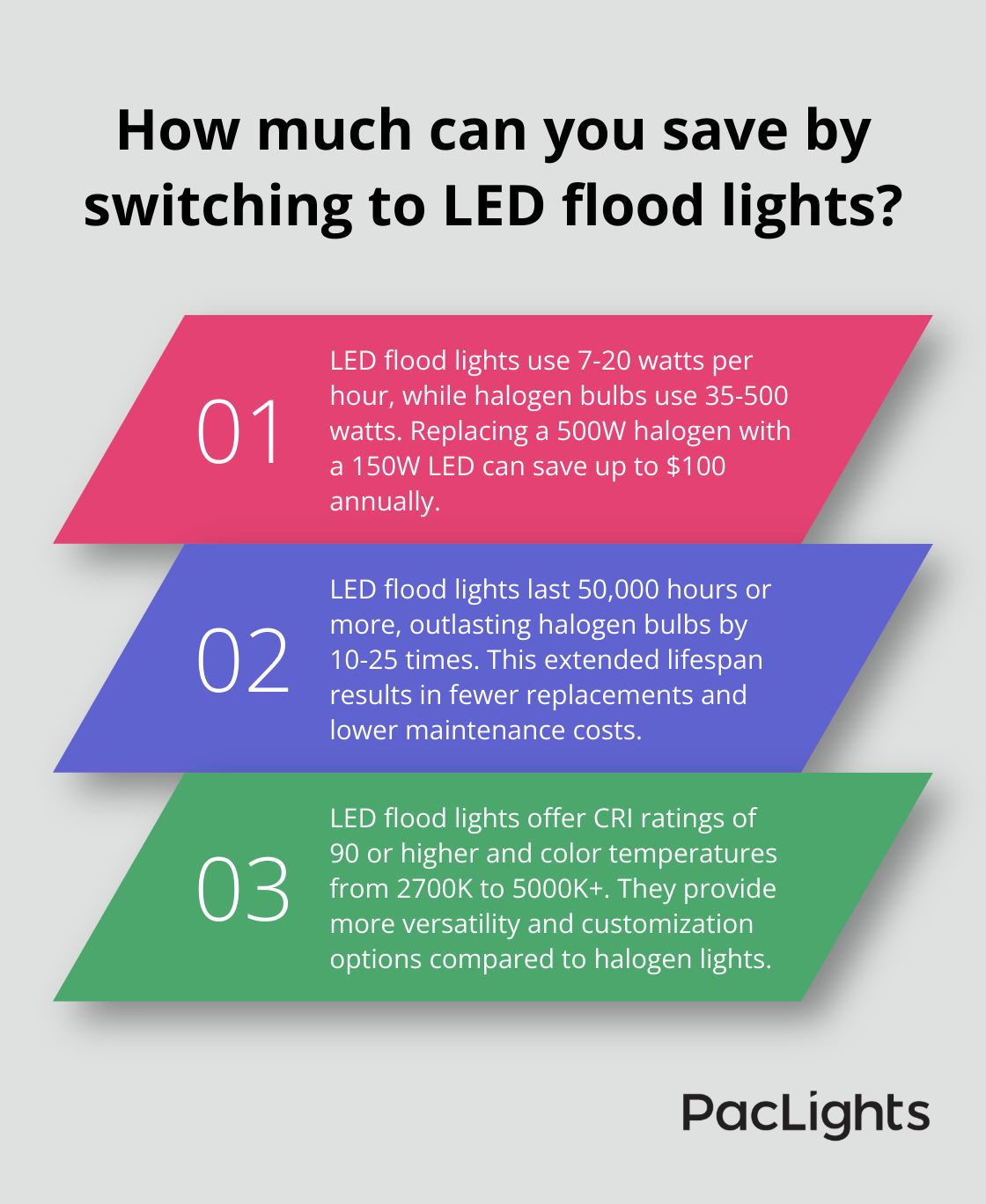
LEDs also offer more versatility in color temperature options, ranging from warm white (2700K) to daylight (5000K+). This flexibility allows for better customization of lighting to suit specific environments or preferences.
Environmental Impact
The environmental footprint of lighting choices carries increasing importance. LED flood lights significantly reduce carbon emissions due to their energy efficiency and longer lifespan. They also contain no mercury or other hazardous materials, simplifying disposal and enhancing safety.
Halogen bulbs, while recyclable, contain trace amounts of harmful gases and require more frequent replacement, leading to increased waste over time.
Installation and Maintenance
LED flood lights typically offer easier installation and lower maintenance requirements. Their lower heat output allows for installation in a wider range of locations without concerns about fire hazards or heat damage to surrounding materials.
Halogen flood lights, due to their high operating temperatures, often require more careful placement and may need additional safety measures in certain installations.
In terms of maintenance, LED flood lights require minimal upkeep beyond occasional cleaning. Halogen lights, conversely, may need more frequent bulb changes and adjustments due to their shorter lifespan and potential for color shift over time.
While the initial cost of LED flood lights typically exceeds that of halogen options, the long-term savings in energy costs, replacement expenses, and maintenance make them the more economical choice for most applications. As LED technology continues to advance, lighting manufacturers (such as PacLights) offer cutting-edge, energy-efficient lighting solutions that provide superior performance and value for customers.
LED flood lights outperform halogen options in most applications. They offer superior energy efficiency, longevity, and versatility, resulting in significant cost savings over time. LED flood lights also provide excellent light quality and control options, making them ideal for various outdoor and commercial settings.
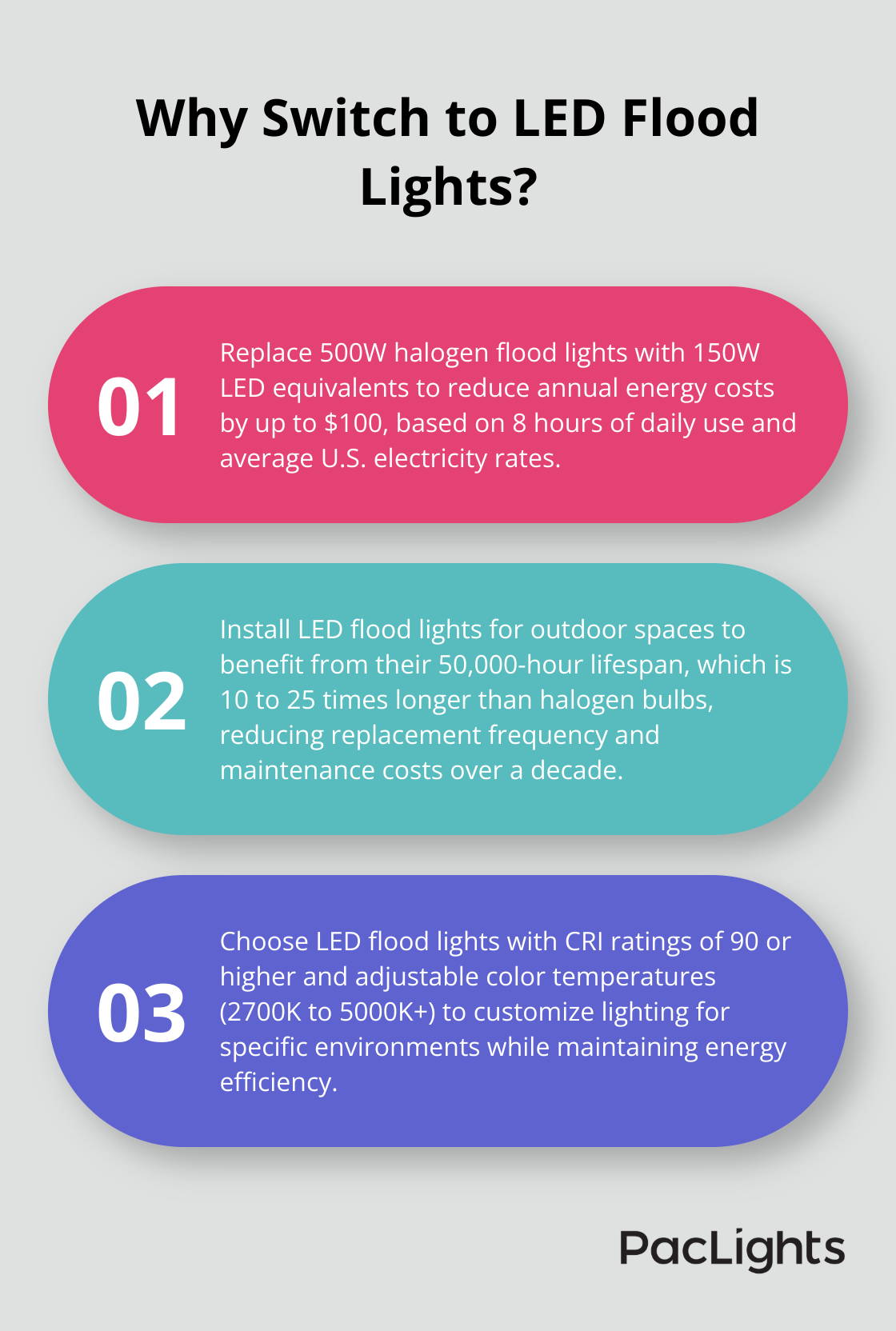
Halogen flood lights have some advantages, such as lower initial costs and good color rendering. However, their higher energy consumption and shorter lifespan make them less economical in the long run. The heat generation and fragility of halogen bulbs also limit their applications in certain environments.
At PacLights, we offer a range of LED flood light solutions to meet diverse lighting needs. Our products provide efficient illumination for various applications, helping to reduce costs and environmental impact. Contact our team to find the perfect flood light solution for your specific requirements.


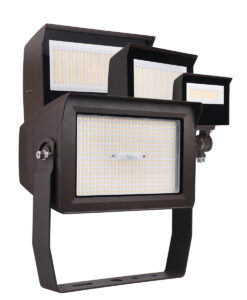
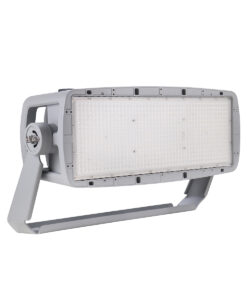
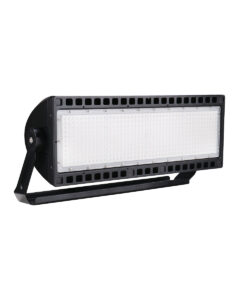
Disclaimer: PacLights is not responsible for any actions taken based on the suggestions and information provided in this article, and readers should consult local building and electrical codes for proper guidance.